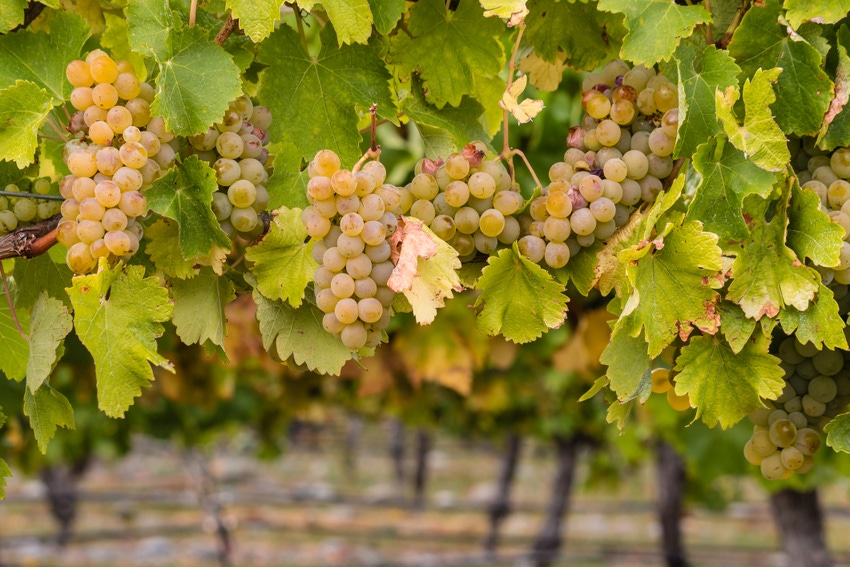
A mid-June review by Turrentine Brokerage of the number and sizes of clusters following the May bloom indicates California’s wine grape growers are on track to producing an average size crop.
“The market continues to be in short supply for all major varieties in the North Coast and also short most varieties in the Central Coast,” says Brian Clements, vice president of the wine and grape brokerage firm company based in Novato, Calif.
“For the most part, the set throughout California was decent to good. Although the quality of the fruit is still to be determined, crop size looks to be average to a little above , depending on the area, except for Lodi.”
There, even though the Chardonnay crop appears to be smaller than average, soft demand could result in an overage of Zinfandel.
“Right now quite a bit of the Lodi Zinfandel is available for sale,” Clements says. “But, we think most if it should find a home by harvest.
At this point most observers are looking for California wine grape production to total around 4 million tons this year, he said. Add in the increasing tonnage from recent plantings, and he expects the crop will probably come in at 4 million tons-plus.”
That compares to last year when the statewide grape crush totaled 4.2 million tons, up a little over 9 percent from 2015.
The 2016 crush was California’s third largest in the past 10 years. The 2013 crop topped the list at a record 4.7 million tons, followed by the 4.4-million-ton crush in 2012.
Since much of this year’s Central and North Coast crop is already spoken for in the way of signed production contracts, Clements doubts that much fruit will be available in these areas for spot market buyers this fall.
The short supply of North Coast grapes for much of last year is expected to continue through this year, he adds.
“Nothing in the North Coast is long on supply, especially Cabernet Sauvignon, Chardonnay and Pinot Noir in Napa and Sonoma,” Clements says. “Central Coast supplies should remain as they were last year. A little Paso Robles Cabernet Sauvignon is still available for sale. However, grapes of that and other varieties harvested this fall will likely find a home.”
He’s less sure about the market for 2017 Southern Central Valley wine grapes. This region represents a fair amount of California’s production. “With an average-size crop this year, wine grape prices should remain similar to last year for most varieties,” Clements notes. “However, declining demand for wines priced under $10 a bottle, most of which is made with grapes grown in this region, could dampen prices of fruit destined for that market.
Among the factors contributing to the likely limited supply of California grapes on this year’s spot market are strong sales of wines priced at $10 or more per bottle and continued willingness of wineries to commit to multi-year grape purchase agreements. These trends indicate wineries remain confident that consumers will keep buying their wines, Clements adds.
“The market for California wine grapes is pretty much set for this year,” he says. “Assuming the economy and consumer confidence continue as is and the quality of this year’s fruit doesn’t suffer any damage, it should be a good year for both growers and wineries.”
About the Author(s)
You May Also Like




